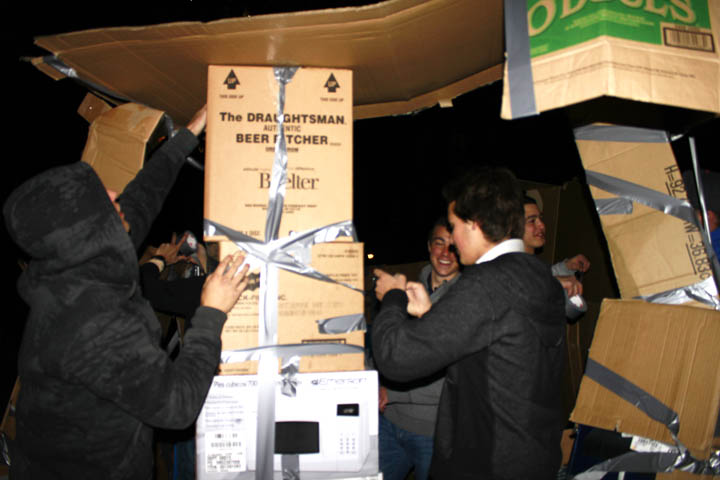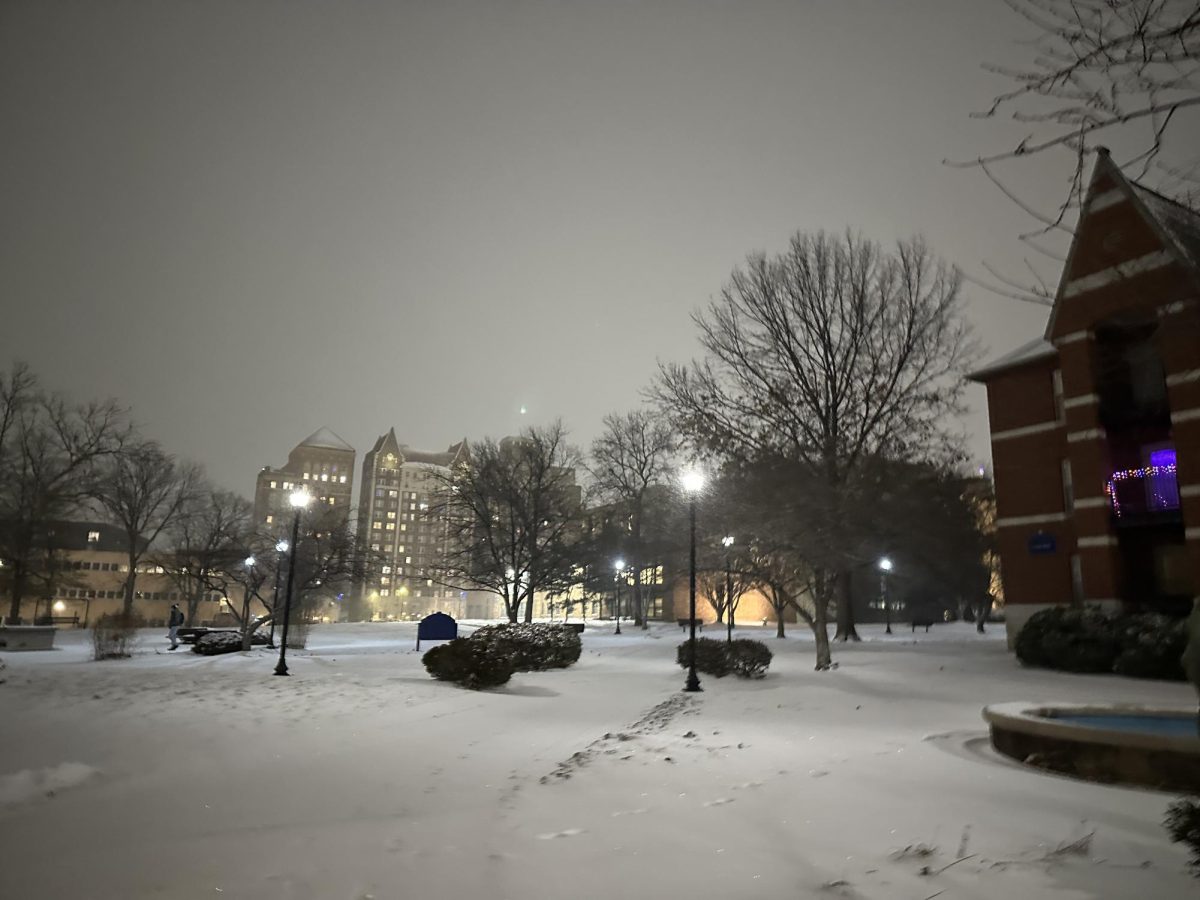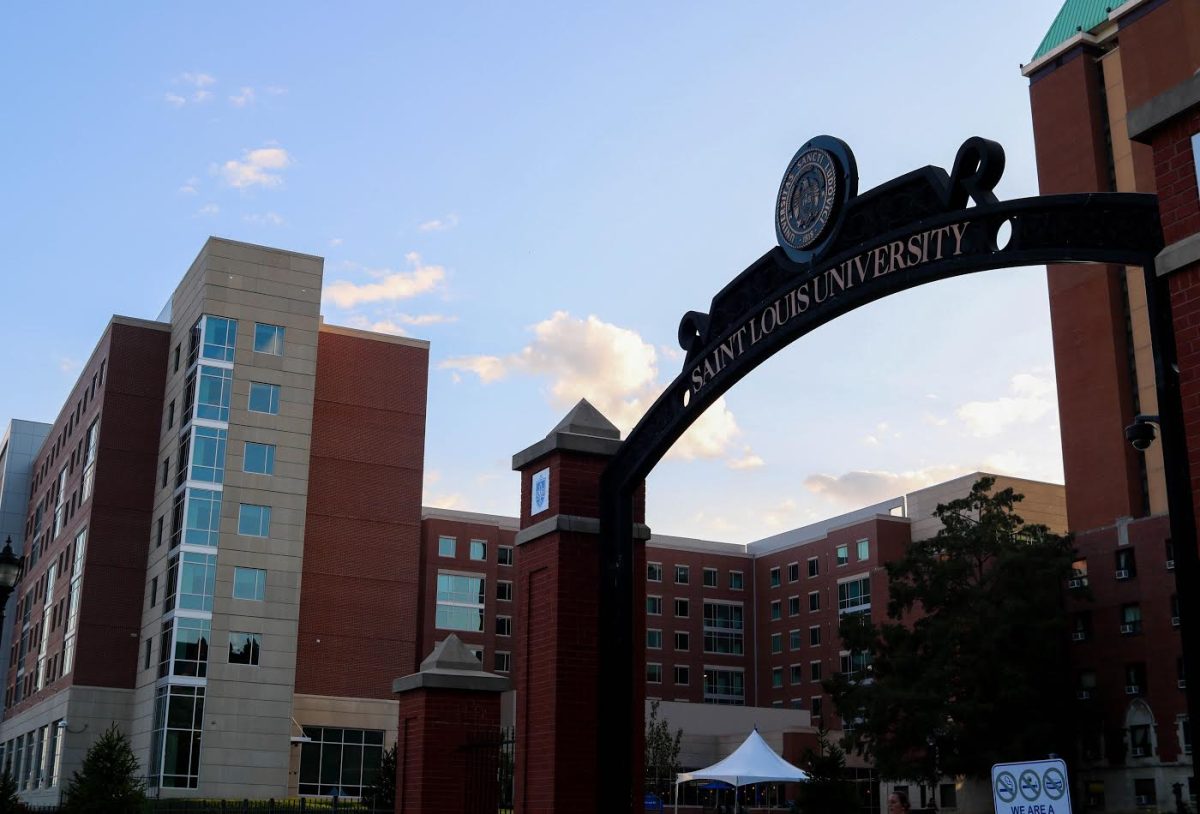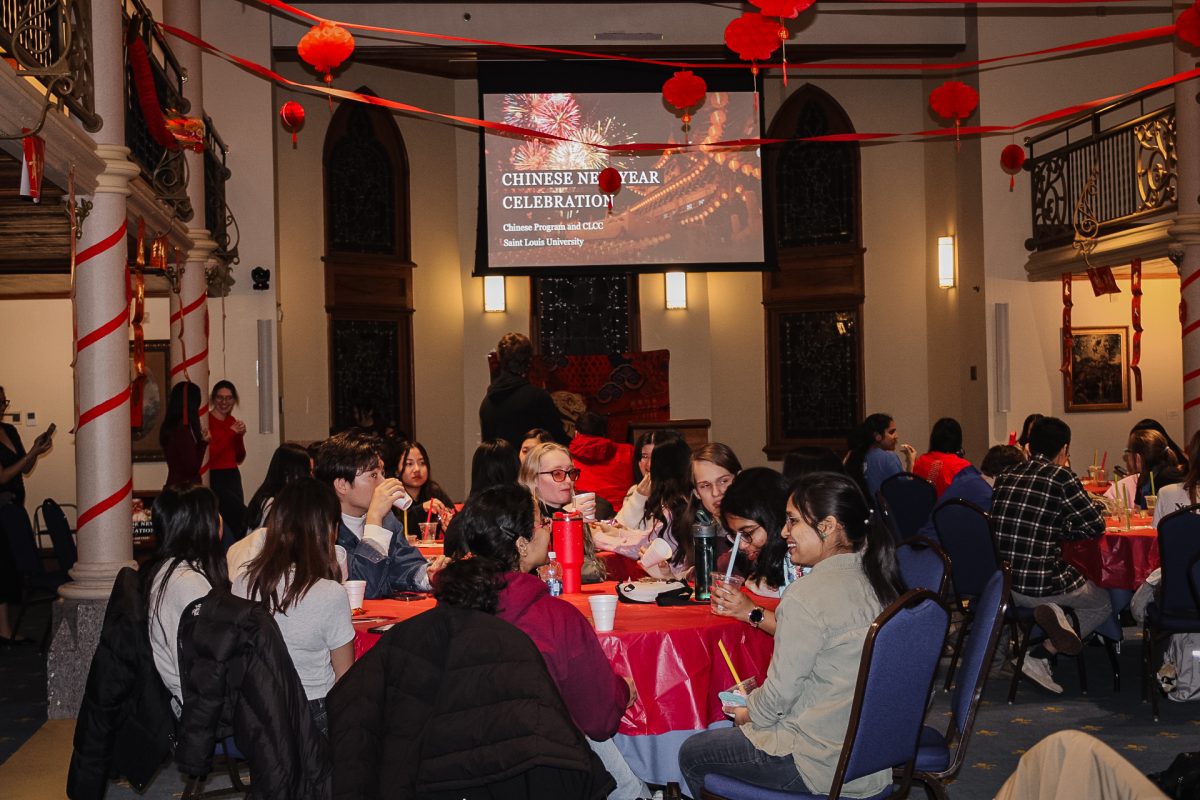
Students participated in Habitat for Humanity’s annual Cardboard City event on Oct. 2. in the quad.
Event participants used previously-collected cardboard, duct tape, and spray paint to erect makeshift structures to sleep in overnight. Though the quad became a creative space for students to build structures as elaborate or as simple as they’d like, the purpose of the event was to get students to empathize with members of the St. Louis community that have to resort to living in substandard housing.
“My hope is that everyone who comes leaves knowledgeable about substandard housing,” Caitlin Dunn, co-president of SLU’s Habitat for Humanity organization, said.
She said it was a visual and interactive activity that gave participants time to reflect.
Though the event intended on being reflective as well as enjoyable, students who participated also could also use Cardboard City as a learning experience. In order to get building materials, students had to answer trivia about substandard housing. They were invited to graffiti their buildings with these facts and figures.
“Some showed off their skills with a building made out of wood and nails. There have been Saran Wrap buildings, igloos, sandcastles, a jungle gym,” Dunn said.
In order to participate, Habitat for Humanity asked for a three dollar donation before Oct. 2, or five dollars if students signed up on the day of the event.
According to Dunn, the entire donation went to help fund Habitat for Humanity’s projects.
At the event, a current owner of a home that Habitat for Humanity helped build spoke about her experiences before and after having her house.
Compared to last year, Dunn said that Habitat for Humanity has seen a rise in membership and popularity.
However, mostly in response to some criticism last year, the event attempted to focus on education and advocacy.
“This is not an accurate portrayal of substandard housing,” Dunn said. “We hope this will encourage students to advocate for a change in how we treat the less fortunate, but no less deserving, who are in need of simple, decent shelter.”
Students also had the option to sign a petition that advocates for a change in substandard housing to send to our senators and congressmen.
Dunn said that a common misconception about Habitat for Humanity is that the organization just gives houses away.
“Habitat is trying to supply simple, decent shelter. Homeowners purchase the houses from Habitat on a zero percent mortgage; the labor is volunteered, and [homeowners] only pay for the house,” Dunn said.
Dunn thought that the event was fun, and believed that students enjoyed participating in the project and were reminded to be happy for what they have.









